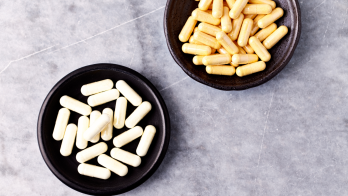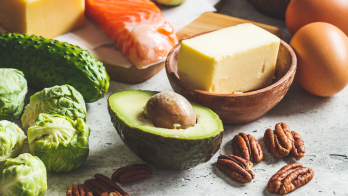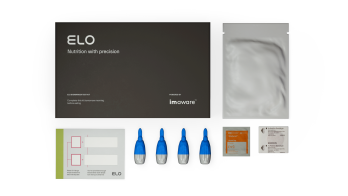The best science-backed strategies to reduce LDL cholesterol without medication
High LDL cholesterol puts you at risk for serious health issues, such as heart attack, stroke, and atherosclerosis. Lowering your LDL levels through diet and lifestyle modifications is possible and may even save your life. Here are the best science-backed strategies to reduce your LDL cholesterol without medication.
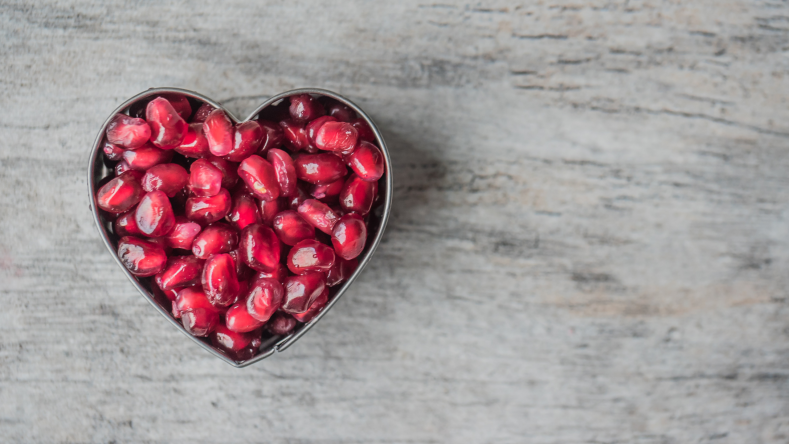
Cholesterol gets some negative publicity, but it’s not inherently “bad”. While high cholesterol is associated with heart attacks and strokes, your body also needs cholesterol for cell membranes, making hormones (such as estrogen, testosterone, and adrenal hormones), digestion and vitamin synthesis.
HDL (“good cholesterol”), LDL (“bad cholesterol”), and total cholesterol are routinely measured to gauge heart health. Ideally, LDL cholesterol levels should be under 100 mg/dL, and while medication is one solution, you can also lower it naturally through diet and lifestyle changes. Before discussing these science-backed strategies in more detail, let’s start by examining what cholesterol is and how to interpret your results.
What is cholesterol?
Cholesterol is a waxy substance in your blood that is used to create new cells, hormones, and vitamin D. While you can get cholesterol from the foods you eat, your liver produces all the cholesterol your body needs [13].
Although cholesterol serves several important functions, high (total) cholesterol is a risk factor for heart disease. Total cholesterol is calculated by measuring LDL and HDL cholesterol levels, as well as triglycerides.
LDL stands for low density lipoprotein and is often referred to as “bad” cholesterol because it accumulates in your blood vessels and increases your risk for heart disease, stroke, and atherosclerosis (fat buildup in the arteries) [1]. Conversely, HDL stands for High Density Lipoprotein, and is considered “good” cholesterol because it picks up cholesterol and returns it to the liver for excretion [2].
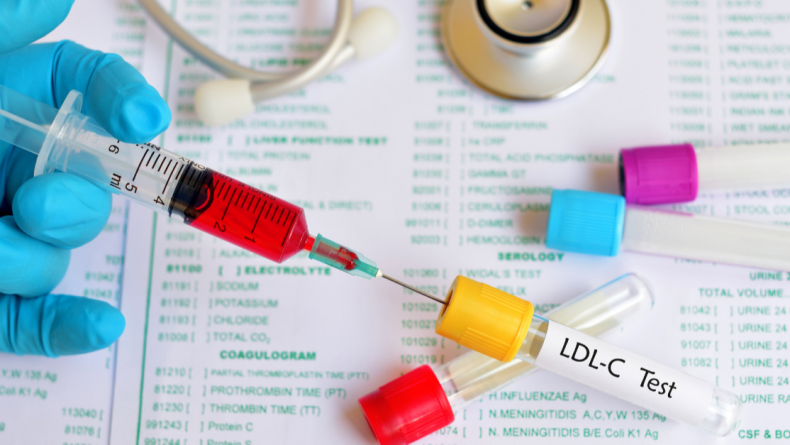
Interpreting LDL results
Ideally, LDL levels should be less than 100mg/dL. Most healthy adults should get cholesterol levels checked every four to six years, but if you have heart disease, diabetes, or a family history of high cholesterol, you should get it checked more frequently [3].
Here’s how to interpret your LDL cholesterol level results [4]:
<100 mg/dL: Optimal
100-160 mg/dL: Elevated
>160 mg/dL: High
For those at risk for cardiovascular disease, it’s recommended to have LDL levels be below 70 mg/dl [14]. Check with your healthcare provider to discuss your cholesterol levels and, if necessary, decide on a treatment plan.
Factors that influence LDL cholesterol
If your LDL levels are high, you’re not alone, since almost one third of US adults also have high LDL cholesterol [5]. From diet and weight to genetics and lifestyle habits, there are many factors that influence elevated LDL levels.
Age
You can develop high LDL cholesterol at any age, but people are most frequently diagnosed between 40 and 59 years old [6].
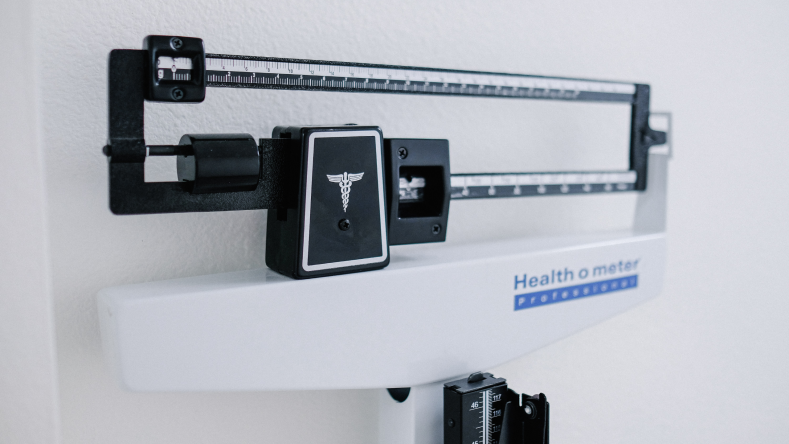
Weight
Being overweight may raise the risk of high cholesterol and elevated LDL levels. Studies show that losing 5–10% of body weight can reduce LDL cholesterol levels and losing 1-3% of body weight may improve HDL cholesterol levels [16,17].
Family history
Genetics can have a significant influence on your blood lipid levels. A condition called familial hypercholesterolemia makes it more difficult for your body to remove LDL cholesterol from the blood and break it down in the liver [6]. If you have a family history of high cholesterol, heart disease, heart attack, or stroke, it’s important to get your levels checked regularly [6,12].
Race and ethnicity
Asian Americans (including those of Indian, Filipino, Japanese, and Vietnamese descent) are more likely to have high LDL cholesterol than other racial ethnic groups [6].
Sex
Men between the ages of 20-39 are more likely to have higher total cholesterol levels than women. However, after menopause, women often see a rise in LDL levels, and are more likely to die from heart disease and stroke than from breast cancer [14].
Poor diet
Eating a diet rich in saturated fats, added sugar, and/or trans fat can increase your LDL cholesterol levels [6]. Conversely, reducing added sugar and processed foods and switching to healthy fats like olive oil, fatty fish and avocado, can help lower LDL.

Lifestyle habits
Smoking cigarettes, not getting enough exercise, drinking too much alcohol, and experiencing high stress can all contribute to elevated LDL levels [6].
How to reduce LDL cholesterol without medication
Though medications (such as statins) are one way to lower your LDL cholesterol, many people successfully decrease their levels through diet and lifestyle modifications instead. Here are some science-backed methods to lower LDL cholesterol without medication.
Reduce saturated fats
Animal fats (such as butter, full-fat dairy, and fatty meats) are rich in saturated fat, which is known to contribute to increased LDL cholesterol levels. For improved heart health, reduce saturated fat intake to < 5-6% of total daily calories to lower cholesterol build up in the bloodstream [19]. You can do this by replacing saturated fats with plant fats (such as olive oil, avocado and nuts), and eating small, fatty fish (such as salmon, sardines, and trout) at least twice a week [7,9].
Avoid trans fats
Trans fats can increase the liver’s production of very low density lipoprotein (vLDL) [20]. They are mostly consumed from partially hydrogenated oils found in baked goods, margarine, shortening, and convenience/packaged foods. Trans fats have been shown to elevate LDL cholesterol and increase risk for cardiovascular disease, and therefore, should be avoided [9].

Increase fiber intake
Fiber binds to cholesterol particles and prevents them from entering the bloodstream. Aim to eat a total of 30-40 g of fiber-rich foods (such as veggies, fruit, whole grains, and legumes) per day, 5-10 g of which should come from soluble fiber [21]. Soluble fiber (such as oats, beans, and barley) can help reduce your risk of heart disease by absorbing cholesterol in the GI tract and lowering total and LDL cholesterol levels by 5-10% [8,9].
Replace dietary saturated fats with unsaturated fats
Polyunsaturated fats are preferentially converted in the liver into ketone bodies and transported to the tissues without leaving a trail of low density lipoprotein (LDL) [22,23]. To help lower heart disease risk, replace saturated fats with polyunsaturated fats (such as walnuts, flax seeds, and fish).

Stay active
Aerobic exercise can help lower LDL cholesterol, but evidence is even stronger for increasing HDL cholesterol and lowering triglycerides [10,11]. Exercise stimulates enzymes that help move LDL particles from the blood to the liver where it is excreted. Adults should aim for > 30 minutes of physical activity 5x/week (150 minutes of moderate-intensity or 75 minutes vigorous intensity aerobic activity per week), along with muscle-strengthening activity twice a week [5,24,25].
Limit refined carbohydrates
To reduce LDL levels, limit sources of refined carbs and added sugars such as soda, chips, candy, baked goods, sweetened yogurt, and ice-cream [15]. Some of these foods may also contain trans fat, which can increase LDL as well as inflammation [6,9].
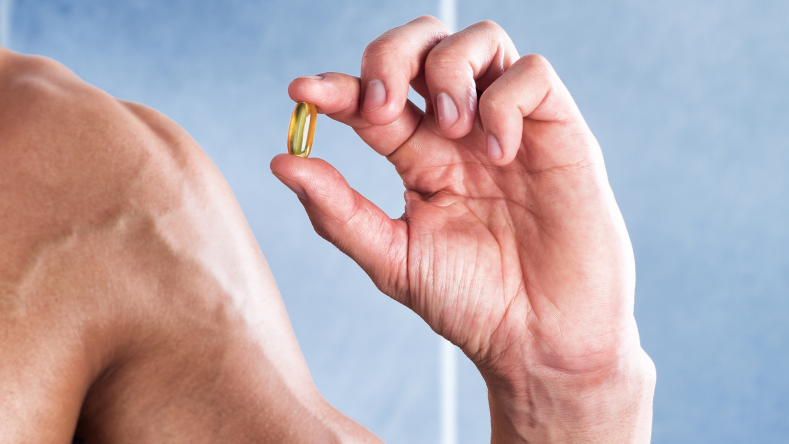
Take supplements
In addition to eating a healthy diet, consuming plant stanols and sterols has been shown to lower total and LDL cholesterol up to 10% and 14%, respectively [18]. You can incorporate plant sterols and stanols with 2g/day in the form of food (such as vegetables, fruits, legumes, vegetable oils, nuts, and seeds) or a supplement.
Drink in moderation
If you have elevated LDL cholesterol, alcohol should be consumed in moderation. Excessive drinking is associated with elevated blood lipids, high blood pressure, heart failure or stroke, so alcohol should be limited to one drink a day for women and two drinks for men [9].
How long does it take to decrease LDL levels?
Evidence suggests that some people can see positive changes in LDL levels in as little as 4 weeks, however, the real-world response is often longer [11]. Moreover, response time varies depending on genetics, baseline levels and interventions - be patient and persistent!
Summary
LDL cholesterol is known as the “bad” cholesterol because it can accumulate in arteries, and is associated with heart disease and stroke. Many people struggle with high LDL cholesterol due to risk factors, including age, race, sex, genetics, and diet. Though medication is an option for lowering your LDL levels, there are many natural, evidence-based strategies to try instead. Replacing butter with olive oil, eating more soluble fiber (through fruits, vegetables, legumes, and whole grains), and getting regular exercise are all excellent methods to improve your LDL levels without medication.
Disclaimer: The text, images, videos, and other media on this page are provided for informational purposes only and are not intended to treat, diagnose, or replace personalized medical care.
Key takeaways
Elevated LDL cholesterol (aka “bad” cholesterol) may increase your risk for heart attack, stroke and other forms of cardiovascular disease.
Though medications (such as statins) are one way to lower your LDL cholesterol, many people successfully decrease their levels through diet and lifestyle modifications.
Replacing saturated fats with plant fats (particularly those high in mono and polyunsaturated fatty acids like olive oil) has been shown to help lower LDL cholesterol levels [7,10].
Increasing your intake of soluble fiber has been shown to help reduce total and LDL cholesterol levels by 5-10% [8].
Trans fats are known to elevate LDL cholesterol and increase risk for cardiovascular disease, and should be avoided [10].
References
Centers for Disease Control and Prevention. (2020, January 31). LDL & HDL: Good & Bad Cholesterol. Centers for Disease Control and Prevention.
https://www.cdc.gov/cholesterol/ldl_hdl.htm
.Ouimet, M., Barrett, T. J., & Fisher, E. A. (2019). HDL and Reverse Cholesterol Transport. Circulation research, 124(10), 1505–1518.
https://doi.org/10.1161/CIRCRESAHA.119.312617
Centers for Disease Control and Prevention. (2020, September 8). Getting Your Cholesterol Checked. Centers for Disease Control and Prevention.
https://www.cdc.gov/cholesterol/cholesterol_screening.htm
.Grundy, S. M., Stone, N. J., Bailey, A. L., Beam, C., Birtcher, K. K., Blumenthal, R. S., Braun, L. T., de Ferranti, S., Faiella-Tommasino, J., Forman, D. E., Goldberg, R., Heidenreich, P. A., Hlatky, M. A., Jones, D. W., Lloyd-Jones, D., Lopez-Pajares, N., Ndumele, C. E., Orringer, C. E., Peralta, C. A., … Yeboah, J. (2019). 2018 AHA/ACC/AACVPR/AAPA/ABC/ACPM/ADA/AGS/APhA/ASPC/NLA/PCNA Guideline on the Management of Blood Cholesterol: A Report of the American College of Cardiology/American Heart Association Task Force on Clinical Practice Guidelines. Circulation, 139(25).
https://doi.org/10.1161/cir.0000000000000625
Virani, S. S., Alonso, A., Benjamin, E. J., Bittencourt, M. S., Callaway, C. W., Carson, A. P., Chamberlain, A. M., Chang, A. R., Cheng, S., Delling, F. N., Djousse, L., Elkind, M. S. V., Ferguson, J. F., Fornage, M., Khan, S. S., Kissela, B. M., Knutson, K. L., Kwan, T. W., Lackland, D. T., … Tsao, C. W. (2020). Heart Disease and Stroke Statistics—2020 Update: A Report From the American Heart Association. Circulation, 141(9).
https://doi.org/10.1161/cir.0000000000000757
National Institute of Health. Blood Cholesterol. National Heart, Lung, and Blood Institute.
https://www.nhlbi.nih.gov/health-topics/blood-cholesterol#
.Khaw, K. T., Sharp, S. J., Finikarides, L., Afzal, I., Lentjes, M., Luben, R., & Forouhi, N. G. (2018). Randomised trial of coconut oil, olive oil or butter on blood lipids and other cardiovascular risk factors in healthy men and women. BMJ open, 8(3), e020167.
https://bmjopen.bmj.com/content/8/3/e020167
Surampudi, P., Enkhmaa, B., Anuurad, E., & Berglund, L. (2016). Lipid Lowering with Soluble Dietary Fiber. Current atherosclerosis reports, 18(12), 75.
https://doi.org/10.1007/s11883-016-0624-z
Pallazola, V. A., Davis, D. M., Whelton, S. P., Cardoso, R., Latina, J. M., Michos, E. D., Sarkar, S., Blumenthal, R. S., Arnett, D. K., Stone, N. J., & Welty, F. K. (2019). A Clinician's Guide to Healthy Eating for Cardiovascular Disease Prevention. Mayo Clinic proceedings. Innovations, quality & outcomes, 3(3), 251–267.
https://doi.org/10.1016/j.mayocpiqo.2019.05.001
Wang, Y., Xu, D. Effects of aerobic exercise on lipids and lipoproteins. Lipids Health Dis 16, 132 (2017).
https://doi.org/10.1186/s12944-017-0515-5
Yokoyama, Y., Levin, S. M., & Barnard, N. D. (2017). Association between plant-based diets and plasma lipids: a systematic review and meta-analysis. Nutrition reviews, 75(9), 683–698.
https://doi.org/10.1093/nutrit/nux030
What Your Cholesterol Levels Mean. www.heart.org. (n.d.). https://www.heart.org/en/health-topics/cholesterol/about-cholesterol/what-your-cholesterol-levels-mean.
Cholesterol in the Blood. Johns Hopkins Medicine. (n.d.). https://www.hopkinsmedicine.org/health/conditions-and-diseases/high-cholesterol/cholesterol-in-the-blood.
Currie, H., & Williams, C. (2008). Menopause, Cholesterol and Cardiovascular Disease. European Cardiology Review, 4(1), 17. https://doi.org/10.15420/ecr.2008.4.1.17
DiNicolantonio, J. J., Lucan, S. C., & O'Keefe, J. H. (2016). The Evidence for Saturated Fat and for Sugar Related to Coronary Heart Disease. Progress in cardiovascular diseases, 58(5), 464–472.
https://doi.org/10.1016/j.pcad.2015.11.006
Brown, J. D., Buscemi, J., Milsom, V., Malcolm, R., & O'Neil, P. M. (2016). Effects on cardiovascular risk factors of weight losses limited to 5-10. Translational behavioral medicine, 6(3), 339–346.
https://doi.org/10.1007/s13142-015-0353-9
Muramoto, A., Matsushita, M., Kato, A., Yamamoto, N., Koike, G., Nakamura, M., Numata, T., Tamakoshi, A., & Tsushita, K. (2013, November 5). Three percent weight reduction is the minimum requirement to improve health hazards in obese and overweight people in Japan. Obesity Research & Clinical Practice. https://www.sciencedirect.com/science/article/abs/pii/S1871403X13001981.
Phytosterols & Cholesterol. Cleveland Clinic. (n.d.). https://my.clevelandclinic.org/health/articles/17368-phytosterols-sterols--stanols.
Saturated Fat. www.heart.org. (n.d.).
https://www.heart.org/en/healthy-living/healthy-eating/eat-smart/fats/saturated-fats
.Heart Healthy Eating to Help Lower Cholesterol Levels. Cleveland Clinic. (n.d.). https://my.clevelandclinic.org/health/articles/17281-heart-healthy-eating-to-help-lower-cholesterol-levels.
Adding Soluble Fiber to Lower Your Cholesterol. National Lipid Association. (n.d.). https://www.lipid.org/sites/default/files/adding_soluble_fiber_final_0.pdf
Sacks, F. M., Lichtenstein, A. H., Wu, J. H. Y., Appel, L. J., Creager, M. A., Kris-Etherton, P. M., Miller, M., Rimm, E. B., Rudel, L. L., Robinson, J. G., Stone, N. J., & Van Horn, L. V. (2017). Dietary Fats and Cardiovascular Disease: A Presidential Advisory From the American Heart Association. Circulation, 136(3). https://doi.org/10.1161/cir.0000000000000510
Fernandez, M. L., & West, K. L. (2005). Mechanisms by which Dietary Fatty Acids Modulate Plasma Lipids . The Journal of Nutrition, 135(9), 2075–2078. https://doi.org/https://doi.org/10.1093/jn/135.9.2075
Mann, S., Beedie, C., & Jimenez, A. (2013, October 31). Differential Effects of Aerobic Exercise, Resistance Training and Combined Exercise Modalities on Cholesterol and the Lipid Profile: Review, Synthesis and Recommendations. Sports Medicine. https://link.springer.com/article/10.1007/s40279-013-0110-5/tables/2.
Arnett, D. K., Blumenthal, R. S., Albert, M. A., Buroker, A. B., Goldberger, Z. D., Hahn, E. J., Himmelfarb, C. D., Khera, A., Lloyd-Jones, D., McEvoy, J. W., Michos, E. D., Miedema, M. D., Muñoz, D., Smith, S. C., Virani, S. S., Williams, K. A., Yeboah, J., & Ziaeian, B. (2019). 2019 ACC/AHA Guideline on the Primary Prevention of Cardiovascular Disease: Executive Summary: A Report of the American College of Cardiology/American Heart Association Task Force on Clinical Practice Guidelines. Circulation, 140(11). https://doi.org/10.1161/cir.0000000000000677


